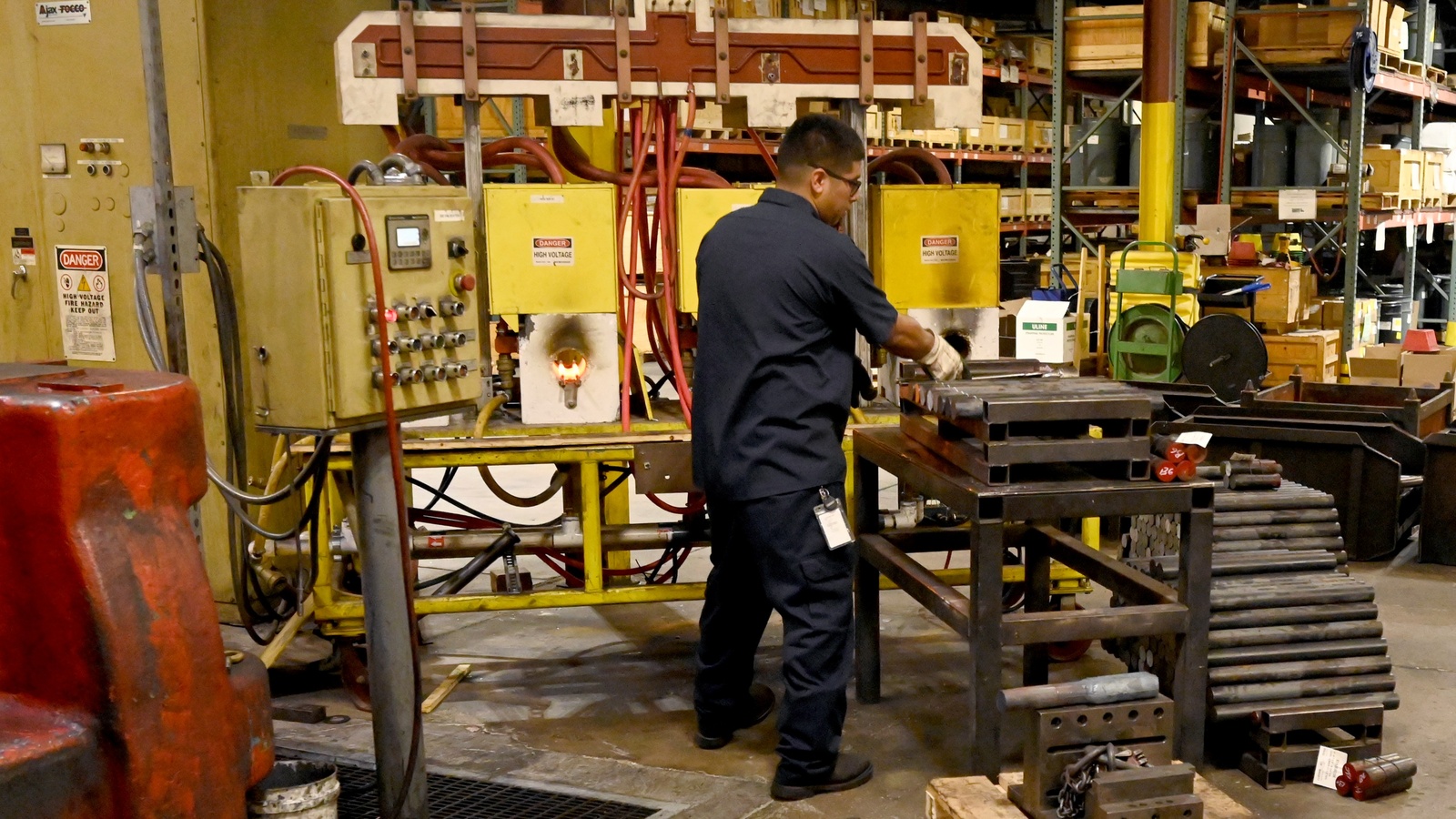Tax Reform Bought a Manufacturer New Equipment and a Brighter Future

The oldest forging machine at Phoenix manufacturer Valley Forge & Bolt dates all the way back to 1930. Plenty of other forging equipment was bought used and then refurbished to help the business keep down costs and maintain its generous benefits for employees. In fact, this type of equipment is the most expensive outlay of capital for the company, according to CEO Michele Clarke.
Thanks to the 2017 tax reform law, however, Valley Forge was able to buy new forging equipment for the very first time. It is “a huge game changer,” said Clarke, “when you can buy state of the art equipment.”
She said as much to Senator Kyrsten Sinema, during the senator’s visit earlier this month to Valley Forge’s facility. Along with CFO Byron Harrod, Clarke spoke to us recently about tax reform’s full range of benefits for their company—and why policymakers should not threaten the gains they and other Arizona manufacturers have made.
A small manufacturer on the rise: Valley Forge is poised to have its best sales year in its almost 50-year history, thanks in large part to the new equipment. Though the pandemic put a temporary dent in its progress, it has seen a marked jump in sales since 2017.
- The company also boosted its employment by 15 to 20% in 2018, rising to 100 workers for the first time, according to Harrod.
Benefits secured: The company makes a point of providing expansive health care coverage, with only a nominal fee for employees. The savings from tax reform has helped it maintain this commitment to employee health, as well as its 401(k) match program.
- Meanwhile, workers benefit directly from the increase in sales as well. The company has a longstanding incentives program, handing out quarterly bonuses once key goals are met.
- “Every employee gets money back if we do well,” as Clarke put it.
A better place to work: The new equipment has made Valley Forge not only more productive and profitable, but also a more comfortable working environment.
- One of the machines it purchased was robotic equipment to grind bolts. “Worst job in the company,” said Clarke. The grinding process removes forging flash so the bolts don’t cut people when handled, and it involves a lot of flying metal chips.
- “The robot probably costs close to $300,000, and we had to build a special room,” she added. It’s taken a whole year for engineers to program and set up the machine, but the benefits are worth it—“it replaces jobs that nobody wants to do.”
How tax reform helped: In addition to the lower corporate tax rate, certain other provisions in the law were crucial to the company’s equipment purchases.
- Take full expensing, which allows companies to deduct the full cost of equipment in the year it is bought. “We went each year [since tax reform] to the maximum for full expensing, sometimes more,” said Harrod.
What’s next? The company must keep adding new capacity, said Clarke, so that it doesn’t join the four or five bolting companies that go out of business around the U.S. each year. “We stay alive because of the technology we’ve developed, and we keep making it more advanced.”
- The company is beginning to produce fasteners with Bluetooth or radio frequency wireless, which can transmit information about their load and whether they have come loose right to your phone.
- It’s hoping to market these fasteners to the wind industry: “They have men who climb up the towers to tighten the bolts,” Clarke explained. “But the work life in that job is a year and a half.”
- Thanks to the new bolts, these workers would only have to make that daunting climb when they know the bolts are loosening.
This is why even the threat of a tax increase is so damaging to manufacturers, according to Clarke and Harrod. They need to be certain that their tax burden will not go up in order to plan confidently for the future.
- “Planning is paramount,” Clarke reinforced. “It takes maybe two years from when a customer first sees [a new product]” until they put in an order.
The NAM says: “Valley Forge is yet one more example of how the 2017 tax reform law helped to power growth for manufacturers,” said NAM Senior Director of Tax Policy David Eiselsberg. “Unfortunately, Congress is considering a major tax on the manufacturing sector that if implemented would reverse the gains from tax reform and hurt the sector’s future competitiveness. As it has done for the better part of year, the NAM will continue to fight against tax increases targeting manufacturers.”
The bottom line: When policymakers start talking about tax increases, “You start to cut back, you think about not replacing engineers who leave,” said Clarke. “You think the government is not on our side; let’s just cut back and make do.”
